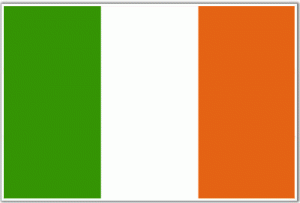Elevated trains still rumble through The Bronx, Brooklyn and Queens. None in Manhattan. This wasn’t the case when little HG was growing up and the ELs (as they were called) ran along Second Avenue, Third Avenue, Sixth Avenue and Ninth Avenue. Noisy. The El made Second Avenue a low end street, furtive with shadows and subway grime. Sixth Avenue was devoted to middle class shopping and the train took you directly to Macy’s on Herald Square. Ninth Avenue was a manufacturing street. Third Avenue was lively. Many restaurants and scores of Irish bars. Loved the various stations on the Third Avenue line with their little cupolas for the change giver (the comedian Jackie Gleason’s mother was one of these ladies) and the pot bellied stoves where you could keep warm while waiting for the train. HG and his late beloved sister, Beulah K., would take the El at Fordham Road in The Bronx (fare was five cents) and take a downtown trip. Exciting. We looked into countless tenement windows (witnessed some entertaining scenes), backyard gardens of brownstones and, best of all, the huge copper pots of the Jacob Ruppert Brewery in the 90’s. We exited at Chatham Square. Chinatown. A big lunch. Wonton soup. Roast pork (or barbecued spare ribs). Shrimp chow mein. Almond cookies. Lots of tea. Lavish lunch for 25 cents. Strolled to Union Square Park on 14th to hear Communists, Anarchists, Socialists, Trotskyites harangue crowds from soapboxes. No Fascists or Capitalists. Free speech, yes. But, there were limits.
The Manhattan El
June 18th, 2012 § 0 comments § permalink
Irish Gourmandizing
March 16th, 2012 § 0 comments § permalink
In days of yore when New York was almost solely an Irish-Italian-Jewish influenced city, the Irish were (in HG’s opinion) very unfairly maligned as food-know-nothings — folks who paid undue attention to strong drink and not enough to good eating. Well, HG (in his impecunious college and early journalist days) ate very well in Manhattan’s Irish saloons. These joints either bore the name of the proprietor (Kelly, Murphy, etc.) or their ancestral turf (Kerry, Down, Shannon,etc.). For some reason (probably low rent) they were often located under the elevated trains that used to roar around the city (Third Avenue, Sixth Avenue, Pearl Street,etc. — all of which were demolished just before or a few years after World War Two). As noted previously by HG, most saloons had big jars of pickled pig knuckles and hardboiled eggs on the bar. But, the big specialty — you guessed it — was corned beef and cabbage. HG can visualize it now: A big, indestructible plate with three healthy slices of corned beef rimmed in fat (fat is flavor, of course); a wedge of cabbage (alas, often overcooked); large boiled potato; hot mustard. A glass of Ballantine’s beer straight from the tap kept it company. This was straightforward, hearty food much appreciated by the working class clientele of the saloons. Customers were classier (stockbrokers, tea, coffee and cocoa brokers) In the saloons under the Pearl Street El. And, the corned beef and cabbage was a shade more aristocratic. Some gin mills had steam tables where inedible beef and lamb stew languished.
A true gourmand destination was a Third Avenue saloon named Connolly’s (near 23rd Street, HG recalls) that was a favorite of uniformed cops as well as detectives and other law enforcement types. The parade dish was pot roast and it was the best HG has ever tasted. It was served as a knife-and-fork sandwich. The very thick sandwich was placed in a bowl and lavishly doused with extraordinarily lush and robust dark brown gravy. Ah!! Up the Rebels!!
Erin Go Bragh!!
